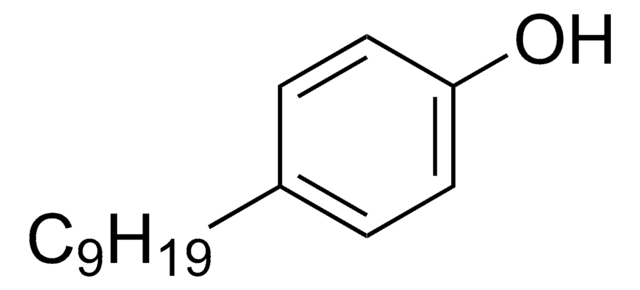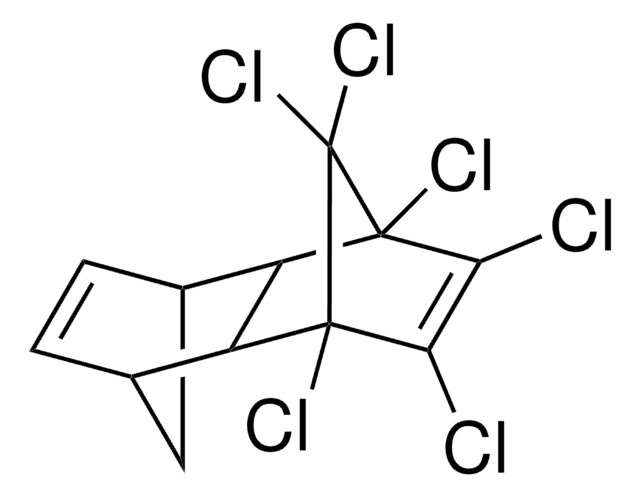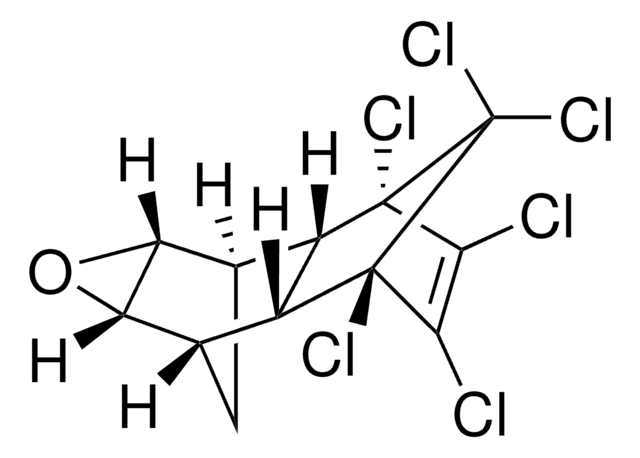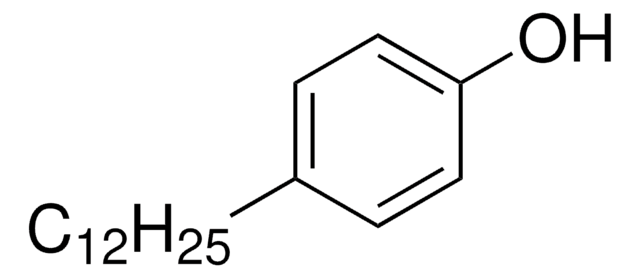Kluczowe dokumenty
46405
4-Nonylphenol
PESTANAL®, analytical standard
Synonim(y):
4-n-Nonylphenol
About This Item
Polecane produkty
klasa czystości
analytical standard
Poziom jakości
linia produktu
PESTANAL®
okres trwałości
limited shelf life, expiry date on the label
metody
HPLC: suitable
gas chromatography (GC): suitable
Zastosowanie
agriculture
environmental
Format
neat
ciąg SMILES
CCCCCCCCCc1ccc(O)cc1
InChI
1S/C15H24O/c1-2-3-4-5-6-7-8-9-14-10-12-15(16)13-11-14/h10-13,16H,2-9H2,1H3
Klucz InChI
IGFHQQFPSIBGKE-UHFFFAOYSA-N
Szukasz podobnych produktów? Odwiedź Przewodnik dotyczący porównywania produktów
Zastosowanie
Informacje prawne
Hasło ostrzegawcze
Danger
Zwroty wskazujące rodzaj zagrożenia
Zwroty wskazujące środki ostrożności
Klasyfikacja zagrożeń
Acute Tox. 4 Oral - Aquatic Acute 1 - Aquatic Chronic 1 - Eye Dam. 1 - Repr. 2 - Skin Corr. 1B
Kod klasy składowania
8A - Combustible corrosive hazardous materials
Klasa zagrożenia wodnego (WGK)
WGK 3
Temperatura zapłonu (°F)
235.4 °F - closed cup
Temperatura zapłonu (°C)
113 °C - closed cup
Środki ochrony indywidualnej
Eyeshields, Faceshields, Gloves, type P3 (EN 143) respirator cartridges
Wykazy regulacyjne
Wykazy regulacyjne dotyczą głównie produktów chemicznych. Można w nich podawać ograniczoną liczbę informacji na temat produktów niechemicznych. Brak wpisu oznacza, że żaden ze składników nie znajduje się w wykazie. Użytkownik odpowiada za zagwarantowanie bezpiecznego i zgodnego z prawem stosowania produktu.
EU REACH SVHC Candidate List
EU REACH Annex XVII (Restriction List)
Wybierz jedną z najnowszych wersji:
Masz już ten produkt?
Dokumenty związane z niedawno zakupionymi produktami zostały zamieszczone w Bibliotece dokumentów.
Klienci oglądali również te produkty
Produkty
Nonylphenols (NP) are ubiquitous substances that have been detected in highly diverse foodstuff. As breakdown products of nonylphenol ethoxylates, NP could end up in the aquatic environment. This article presents a rapid method for NP detection in surface water by planar solid phase extraction – planar yeast estrogen screen (pSPE-pYES).
Nasz zespół naukowców ma doświadczenie we wszystkich obszarach badań, w tym w naukach przyrodniczych, materiałoznawstwie, syntezie chemicznej, chromatografii, analityce i wielu innych dziedzinach.
Skontaktuj się z zespołem ds. pomocy technicznej










